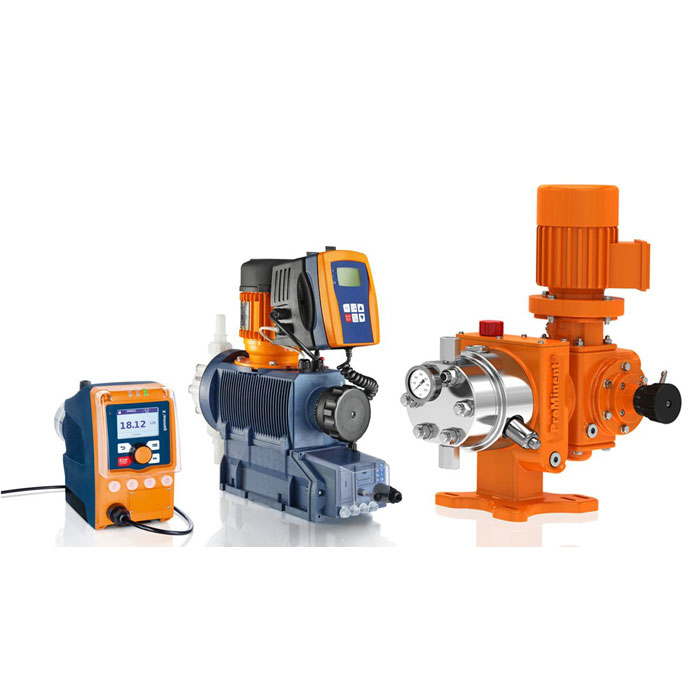
Dosing systems can achieve the desired property of the fluid by adding to it the required amount at the appropriate time of a chemical additive, e.g. adjusting the pH of a solution.
The heart of the dosing system is the dosing pump which determines the dosing rate very precisely. A dosing pump should be able to ensure maximum dosing accuracy in the area of very small operating supplies. Therefore it should have proper design and quality features that allow this possibility.
To adjust the desired fluid properties with high precision requirements
Operating subsystems that determine how the dosing pump operates can be:
01
Time switch
For simple applications in which the operating parameters are fixed, a certain amount of additive is required for a certain time and there are no high requirements for the final result accuracy.02
Flow meter
For more complex applications where the dosing amount is proportional to the flow through the network and is determined by a flow meter pulse. Although only the required amount of chemical additive is injected, the maximum degree of accuracy of the final result is not guaranteed due to the changing conditions.03
Controller
A chemical or physical parameter corresponding to the dosing additive is measured continuously and depending on the preset in a central regulator, the dosing pump is instructed to operate or to stop. It is suitable for systems with high accuracy requirements due to the perfectly controlled mode of operation and ensuring the desired concentration of the dosing additive.The most common case of dosing is chlorination where chlorine in the form of sodium hypochlorite solution is dosed into water for disinfection. PH correction, protection against boiler and cooling tower deposits are other examples of dosing systems.







